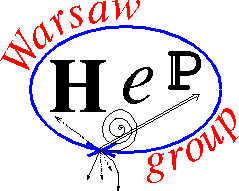SEMINARIUM FIZYKI WIELKICH ENERGII
SEMINARIUM FIZYKI WIELKICH ENERGII
Dnia 25 marca (piątek) o godzinie 10:15, w sali B2.38 odbędzie się
seminarium, na którym zostanie wygłoszony referat pt.:
„From anti-neutrinos to anti-electrons: PET research at the University of Texas at Austin”
Referuje: Prof. Karol Lang (University of Texas at Austin)
Abstract:
Research in fundamental experimental particle physics requires new experiments and novel detectors. Knowledge and experience gained in these endeavors can generate spinoffs that benefit fields outside of particle physics. In this talk, we will describe our work on building a time-of-flight positron-emission-tomography (PET) scanner for proton therapy at MD Anderson in Houston and some other related ideas towards improving and expanding the use of PET detectors.
Karol Lang mini-bio:
Karol Lang is an experimental particle physicist and Jane and Roland Blumberg Professor of Physics at the University of Texas at Austin. He graduated with MSc from Warsaw University. He received his Ph.D. from the University of Rochester participating in an experiment that searched for neutrino oscillations. As a postdoc, Lang worked at SLAC (Stanford) measuring the spin content of the nucleon and on an electron beam dump search for low-mass axions. He then worked at Stanford on a search for KL–>mu-e decays at BNL and a search for the H dibaryon. Lang joined the faculty at the University of Texas at Austin shortly before the Superconducting Super Collider (SSC) was cancelled in 1993. He is now involved in long baseline neutrino oscillations experiments and searches for neutrinoless double beta decay.
Serdecznie zapraszamy
dr hab. Katarzyna Grzelak
prof. dr hab. Jan Królikowski
prof. dr hab. Aleksander Filip Żarnecki

